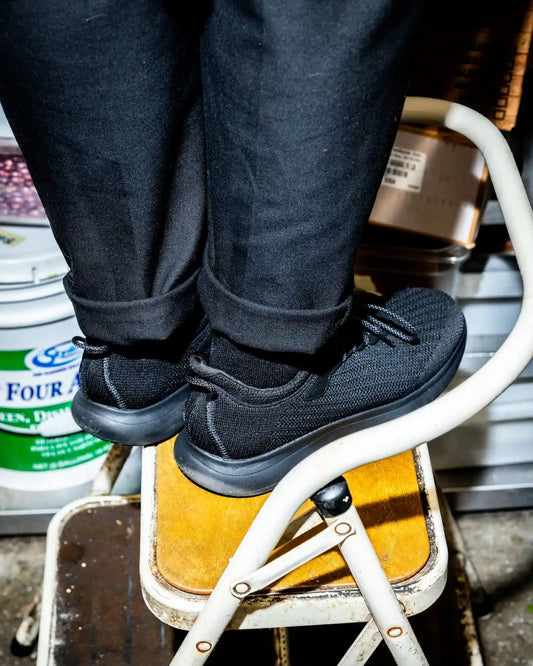What are the Challenges of Being a Doctor?
Klaudia Habek
Working as a doctor is fulfilling, though the career presents its own set of challenges. From long hours and demanding work to dealing with difficult patients, the challenges of being a medical professional and working in healthcare can be overwhelming.
We’ll take a look at the top 10 challenges of being a doctor. From navigating a complex healthcare system to having to make difficult decisions, we’ll explore the unique challenges that come with being a doctor.
1. Emotional Toll
A career in medicine can take an emotional toll on any individual. The emotional challenges of completing medical school to working as a physician can be exhausting. On one hand, doctors are expected to remain composed in the face of life-threatening situations and provide their best treatment decisions with the utmost clinical accuracy. On the other hand, they must remain emotionally available to their patients while also contending with their emotions and the emotional toll of losing a patient.
Moreover, medical personnel have to face not only the emotions of their patients, but also those of their relatives. And, they must manage their own emotions in the process. This can be particularly hard when a patient has a fatal diagnosis or an untreatable condition. Doctors and healthcare providers must show empathy and compassion in the face of such tragedy.
The emotional challenges of being a physician don't end there. Doctors must also remain composed in difficult situations while showing warmth and compassion toward their patients, even when it’s not always reciprocated. Although it can be difficult to navigate, doctors must still establish a connection with their patients by providing care and support within the confines of a professional relationship.
2. Handling Difficult Patients
Another challenging aspect of the physician practice is dealing with difficult patients. Difficult patients can be uncooperative, demanding, and oftentimes verbally abusive. It can be extremely stressful to manage these patients and maintain a professional attitude.
While it may be tempting to react, remember that the patient’s behavior is not personal and try to focus on finding ways to help them rather than becoming defensive or angry. Stress management for nurses and doctors alike is extremely important to stay positive in difficult situations.
It can also be helpful to set boundaries with the patient regarding what you’re willing and unwilling to do. Be clear and direct about what you can offer, as well as when and how you will respond to requests. It’s also important to understand that not all patients will be easy to deal with. If necessary, seek out assistance from other doctors or staff members who have more experience handling difficult patients.
3. Long Hours
A difficult part of having a career in the medical field is the number of hours worked. Doctors and medical professionals typically work long shifts of 12 hours a day or more. This can be physically and mentally draining. Plus, when dealing with many patients, it can be hard to take a break during their shifts.
On-call hours may also be necessary for some doctors, which means they’re required to be available during evenings and weekends in case of an emergency. This can add even more stress and limit their ability to make time for their personal lives.
4. Staff Shortage
Staff shortage is one of the biggest challenges facing the medical world today. As the demand for healthcare providers and services increases, there is an ever-increasing need for medical professionals. Unfortunately, short staffing means that doctors and medical personnel are stretched thin and have to work long hours to care for all patients. This can lead to fatigue and burnout, making it difficult for them to dedicate the time and attention needed from patients.
Staff shortages can also mean that there are fewer resources available to diagnose and treat patients, as well as less personalized patient care. This can lead to longer wait times and poorer outcomes for those in need of medical care.
5. Poor Work-life Balance
With long hours, unpredictable shifts, and emotional demands of the job, it can make it hard for doctors and medical professionals to prioritize themselves and their families. Finding a way to manage these demands and their time and fostering a doctor work-life balance is essential to maintaining job satisfaction and a sense of well-being.
The best way for healthcare workers to achieve work-life balance is to make sure time outside of work is prioritized. This can include planning activities and/or relaxing. Even if it’s just for a few hours, taking time away from work can help them recharge and come back feeling energized.
It’s also important to recognize that although your job as a medical professional is incredibly demanding, your self-care should be prioritized. It’s possible to take breaks throughout the day, whether it’s a few minutes away from your station or a short walk outside during your lunch break. Focusing on self-care is the key to striking a balance between your job and personal life. Plus, when you’re healthy, your patients will be better-taken care of.
6. Job Burnout
Burnout is a very common challenge that physicians face in their profession. There are many physician burnout causes, like the long hours and emotional demands that come with being a doctor. Over time, this job's stress can be taxing, eventually causing mental, physical, and emotional exhaustion. It can cause feelings of helplessness, hopelessness, and lack of accomplishment. Doctors who suffer from job burnout often feel overwhelmed, uninterested in their work, and unmotivated.
If not addressed, physician burnout can have serious consequences for both you, the doctor, and the patient. Doctors suffering from job burnout may be less effective at delivering care due to decreased energy levels, lack of motivation, and reduced concentration. They may also be more likely to make mistakes and fail to provide necessary care.1
Doctors need to recognize the signs of physician burnout to address it before it becomes too severe. Some warning signs of job burnout include:
- Feeling unmotivated
- Difficulty concentrating
- Avoiding interactions with patients
- Low self-esteem
- Feeling disconnected from work2
Finding Comfort and Support in Your Footwear
Being a medical professional requires a high level of resilience and strength to cope with difficult work situations, demanding tasks, and patients. By adopting healthy coping mechanisms, setting realistic goals and expectations for work-life balance, and seeking support when needed, doctors and physicians can navigate their careers better while taking care of themselves.
Working long hours is an inevitable part of this career, so choosing the right footwear is important. That’s where Snibbs comes in.
Our carefully constructed doctor shoes provide the needed comfort with orthopedic insoles. These work shoes' slip-resistant outsoles help you with fatigue and foot pain and get you through your long days.
See how Snibbs shoes have your back and find your perfect pair of water and oil-resistant shoes.
Sources:
- MDPI. Burnout and Doctors: Prevalence, Prevention and Intervention. https://doi.org/10.3390/healthcare4030037
- Kumar, Shailesh. “Burnout and Doctors: Prevalence, Prevention and Intervention.” Healthcare, vol. 4, no. 3, June 2016, p. 37, https://doi.org/10.3390/healthcare4030037














